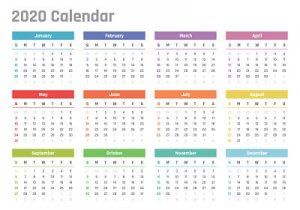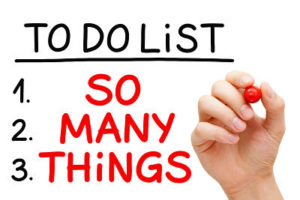Now can we get to work?
January 22, 2020
 Well, here we are, a few weeks into January and everyone is raring to go and ready to work hard for a few weeks. Until some distraction surfaces to take your eye off the ball. And before you know it, it’s June 1st and the summer holiday hits with vacations, the 4th of July and company picnics and then it’s back to school and Labor Day. You would think that with the official wind down to Summer that, in theory, we would all be ramping up.
Well, here we are, a few weeks into January and everyone is raring to go and ready to work hard for a few weeks. Until some distraction surfaces to take your eye off the ball. And before you know it, it’s June 1st and the summer holiday hits with vacations, the 4th of July and company picnics and then it’s back to school and Labor Day. You would think that with the official wind down to Summer that, in theory, we would all be ramping up.
And in September, people will gear up. Until early November and then the holidays will be looming and people will say, “once Thanksgiving is over, we’re going to push hard to the end of the year.” About December 10th, people decide no one is listening to them anymore so they shut down for the rest of the year.
The reality is – whether it’s because several of your team are on vacation, or you’re traveling or it’s not your company’s peak season – we can excuse away going at half speed just about any time of the year and many people do.
It’s a little like dollar-cost average investing. If you wait for the optimum time to deliver your messages, advance your next project or launch something new – it will never happen. It’s impossible to time your marketing precisely. Sure, there’s a seasonality to some work and messaging, but for the most part, it’s about being in front of your key audiences every day, delivering help and insight whether they are actively listening or not.
How do you keep the momentum going, even with all of the holidays, vacations, Super Bowls, and general sports excitement going on all around us?
One of the answers to that question is to operate in sprints. A sprint is a defined period of time (typically 2-6 weeks) where the entire team is focused on a single objective or project. It doesn’t mean they stop doing their day-to-day jobs. It just means that the entire team is working together on a new initiative as well.
The beautiful thing about sprints is that they force us to take action. Many teams get stuck in the discussion/discovery stage and never seem to be able to move from talking to doing.
To work through a sprint, you need to include these five elements:
- A set time frame for your sprint
- A planning meeting to determine goals and assign roles
- Daily stand up meetings to keep the team on track
- A tracking system that everyone on the team can access and update. Keeping it visible (like a big whiteboard in your conference room) is ideal.
- A post sprint review
Some best practices you should implement include:
Once you set the sprint’s length, you can’t change it. Otherwise, you will find yourself in one never-ending sprint as you allow excuses, distractions, and surprises derail your efforts.
You can’t kick off your sprint until you have SMART (specific, measurable, attainable, relevant and time-specific) goals defined.
In your daily stand up meetings (which should not last more than 10-15 minutes) each team member should quickly answer three questions. What did I do yesterday? What will I do today? Are there any issues/impediments that the team needs to know about?
A side benefit of working in sprints (all part of the scrum methodology) is that your team is likely to love their work even more. They feel a sense of accomplishment and pride in moving things forward.
The point of these sprints is that you and your team get into a groove every 2-6 weeks, regardless of what the calendar says. You may adjust timelines or team members based on vacations or a company-wide holiday, but you don’t let the “seasons” become excuses to get in the way of your progress.
Be productive no matter what distractions are trying to steal your focus.
This was originally published in the Des Moines Business Record, as one of Drew’s weekly columns.
More








